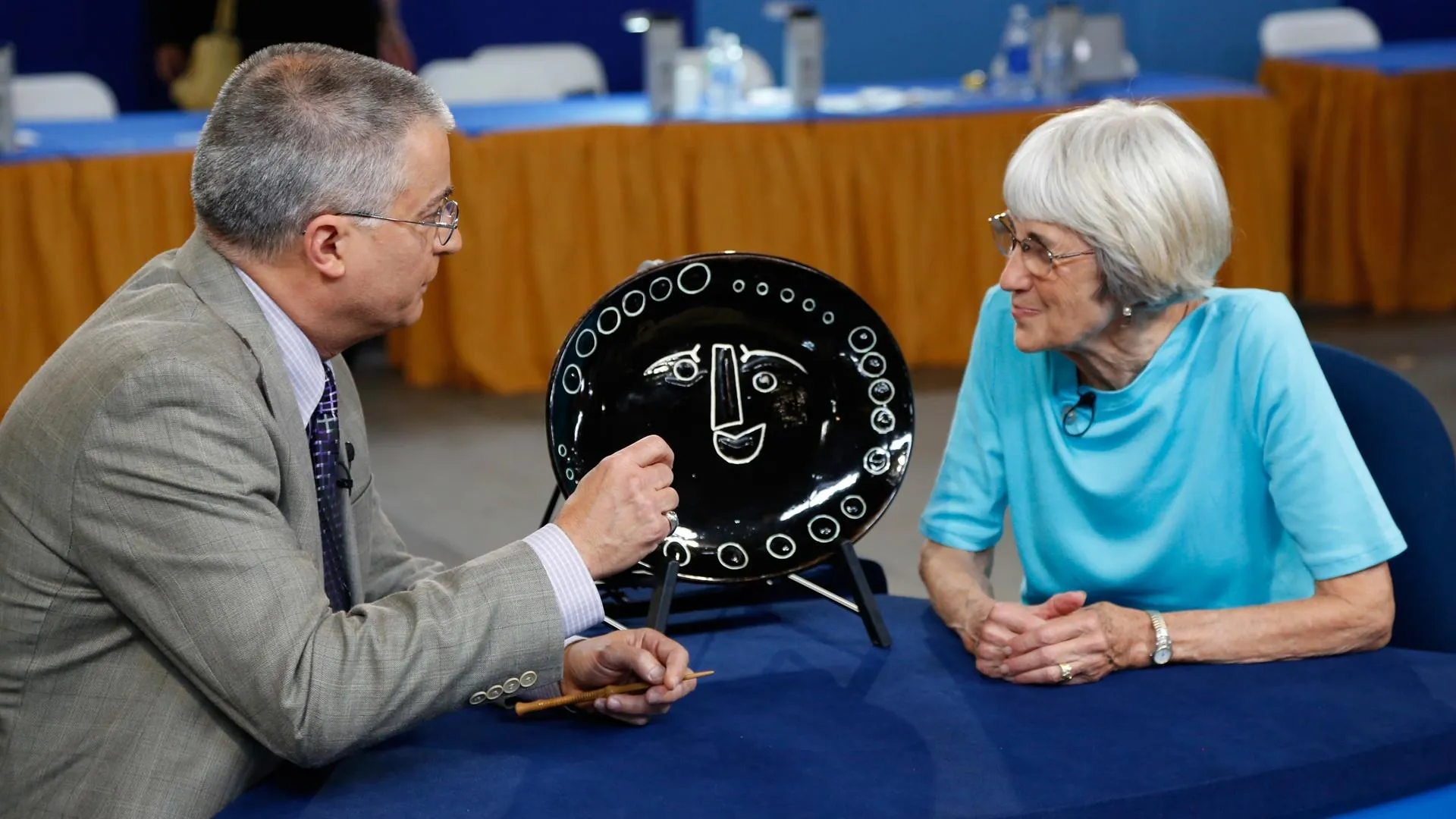GUEST: My family's had this since it was made, and it's been passed down to the girls that were named Margaret.
APPRAISER: Margaretta Ross.
GUEST: And then her granddaughter was named after her, her name was Margaret Ross, and then when she passed, she passed it on to my aunt, and her name was Margaret, and my mother's name is Margaret.
APPRAISER: That's so cool. But your name's Gail.
GUEST: My name is Gail, yeah.
APPRAISER: They didn't change your name to Margaret just so you could get it? You got it anyway? That's so great that it's yours now, and you've enjoyed it for several years, right?
GUEST: Yes, about four years.
APPRAISER: We already know it, Margaretta Ross, right. "To be good is to be happy," which I think is such a great line. It's like, "Don't worry, be happy," that great phrase. "To be good is to be happy." So Margaretta Ross went to a finishing school in Lancaster in 1825. She was at the Sarah McCardell School in Lancaster County, Pennsylvania. So as was typical, the mistress of the school would draw the design-- she would draw this house, draw the trees, draw this basket of flowers with leafage, tulips. We come down to the bottom, we've got the pair of birds here. So she would draw all of this differently for each girl, and then the girl would dutifully complete their sampler, and depending on how well they did, they would be judged. And the girl would be approximately probably 12 years old, 12 or 13. Margaretta would have taken this work home and put it in the home and it would say to the world, "My dad can afford to pay for a finishing school." When someone came calling, it was nice to have that on the wall. It made quite a statement. This is actually silk floss, so it's untwisted silk, and that's why it looks so fluffy. It's beautiful work. We were all excited at the folk art table, I'll tell you, when it came in. You probably saw us there...
GUEST: Yes.
APPRAISER: I have to tell you, there is an issue. This would have been much brighter at one time. Some colors have held, like these reds. This is some water damage. That staining is a real turn-off to sampler collectors, to needlework collectors, so that would have to be conserved. But still, I feel the pre-sale auction estimate on this sampler would be $7,000 to $10,000.
GUEST: Really?
APPRAISER: Yeah.
GUEST: Wow. That's really nice.
APPRAISER: If it didn't have the water damage, this sampler could be worth over $10,000.
GUEST: Really?
APPRAISER: It would add a few thousand.











